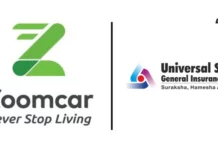Introduction – In the complex landscape of Indian insurance and investment products, Return-on-Premium (ROP) plans have emerged as a distinctive option for high-net-worth individuals (HNWIs) seeking both protection and wealth preservation. As India’s HNWI population continues to grow—reaching approximately 350,000 individuals in 2023 according to industry estimates—the demand for sophisticated financial products that offer dual benefits has increased significantly.
Understanding Return-on-Premium Plans
Return-on-Premium plans represent a unique intersection of insurance and investment, designed to address a common concern among wealthy individuals: the perceived “loss” of premium payments in traditional term insurance plan. These plans fundamentally alter the conventional insurance paradigm by guaranteeing the return of premiums paid if the policyholder survives the policy term.
Core Features and Benefits
The primary appeal of ROP plans lies in their structure, which offers:
- Term Insurance Coverage: During the policy period, beneficiaries receive the full sum assured in case of the policyholder’s demise
- Premium Return: 100% of basic premiums are returned at policy maturity
- Tax Benefits: Premiums qualify for deductions under Section 80C of the Income Tax Act
- Additional Riders: Options for critical illness coverage, accidental death benefits, and disability coverage
The HNWI Perspective: Why ROP Plans Make Sense
High-net-worth individuals in India, typically defined as those with investable assets exceeding ₹5 crores, approach financial planning differently from the general population. Their investment decisions often prioritize wealth preservation alongside growth, making ROP plans particularly relevant.
Financial Planning Considerations
For HNWIs, ROP plans serve multiple strategic purposes:
Asset Diversification: An Indian wealth management landscape has evolved significantly, with HNWIs typically maintaining a portfolio split of:
- 30% in equity investments
- 25% in real estate
- 20% in fixed income
- 15% in alternative investments
- 10% in insurance and other products
ROP plans fit well within this diversification strategy, offering a unique combination of protection and guaranteed returns.
Tax Optimization: With India’s highest tax bracket at 42.74% (including surcharges), HNWIs actively seek tax-efficient investment vehicles. ROP plans offer multiple tax advantages:
- Premium payments qualify for tax deduction
- Maturity proceeds are tax-free under Section 10(10D)
- Death benefit remains tax-free for beneficiaries
Comparative Analysis: ROP vs Traditional Investment Options
Understanding how ROP plans stack up against other investment options provides crucial context for HNWIs:
Fixed Deposits (FDs)
- Average return: 6-7% p.a.
- Fully taxable at the marginal rate
- No insurance component
ROP Plans
- Effective return: 4-5% p.a. (considering the time value of money)
- Tax-free returns
- Includes life coverage
- Additional riders available
Market-Linked Insurance Products
- Potential returns: 8-12% p.a.
- Market risk exposure
- Limited guaranteed components
Risk Assessment and Suitability
While ROP plans offer attractive features, they require careful evaluation:
Advantages for HNWIs
- Capital Preservation: Guaranteed return of premium appeals to conservative investors
- Estate Planning: Structured way to transfer wealth to next generation
- Tax Efficiency: Multiple tax benefits throughout the policy lifecycle
Considerations and Limitations
- Opportunity Cost: Returns may be lower compared to pure investment products
- Inflation Impact: Long-term value erosion of returned premium
- Liquidity Constraints: Limited access to funds during policy term
Implementation Strategies
Successful integration of ROP plans into an HNWI portfolio requires strategic planning:
Optimal Allocation
Industry experts recommend limiting ROP plan allocation to 10-15% of the overall insurance portfolio for HNWIs, ensuring balanced exposure while maximizing tax benefits.
Structuring Considerations
For maximum benefit, HNWIs should consider:
- Policy term alignment with financial goals
- Premium payment frequency optimization
- Rider selection based on specific needs
- Integration with existing insurance coverage
Market Trends and Future Outlook
The Indian insurance market has shown significant growth in the ROP segment:
- 25% year-over-year growth in premium collection
- Increasing product innovation from insurers
- Growing demand from younger HNWIs (35-45 age group)
Conclusion
Return-On-Premium plans represent a sophisticated financial instrument that can serve multiple objectives for high-net-worth individuals in India. While not a complete solution in isolation, these plans can be valuable components of a comprehensive financial strategy when properly structured and implemented. The key lies in understanding individual financial goals, risk tolerance, and how ROP plans complement existing portfolio components.
For HNWIs considering ROP plans, the decision should be made in consultation with qualified financial advisors who can evaluate personal circumstances and optimize the plan’s structure for maximum benefit. As the Indian insurance market continues to evolve and innovative products emerge, ROP plans are likely to remain relevant for those seeking a balance between protection and wealth preservation.
Also Read: The Role of Term Life Insurance in a Well-Planned Financial Portfolio








